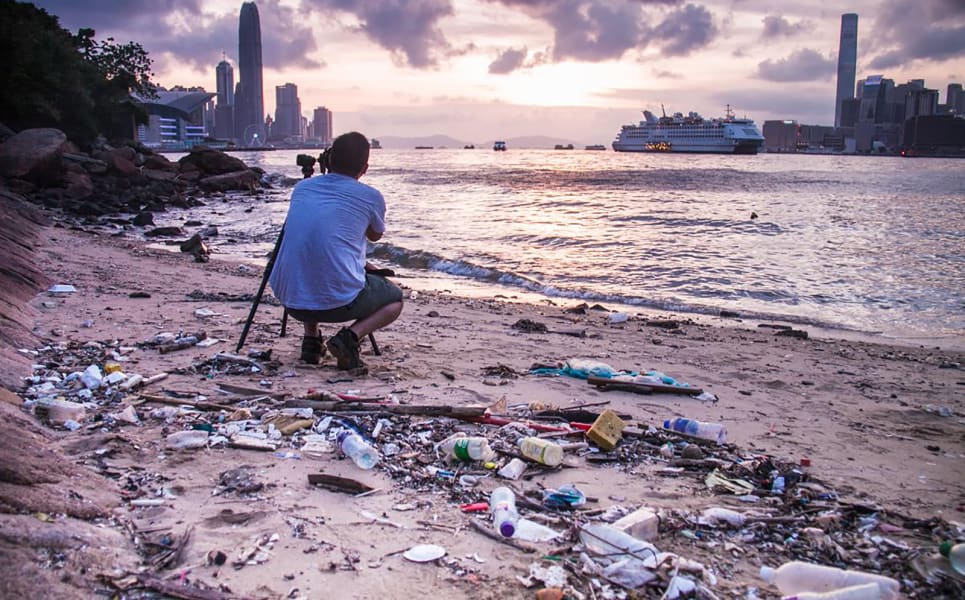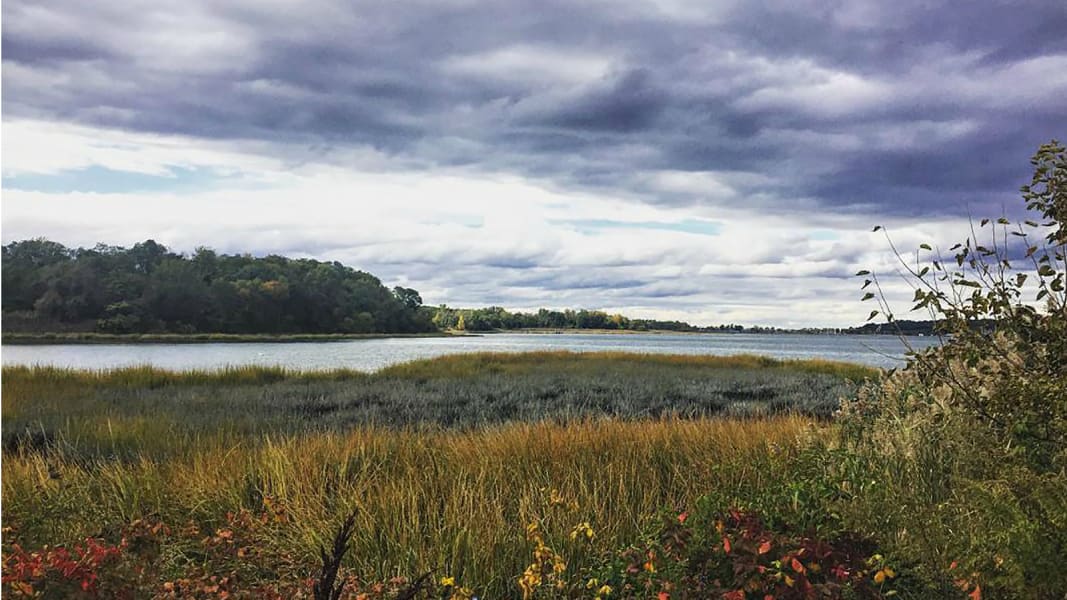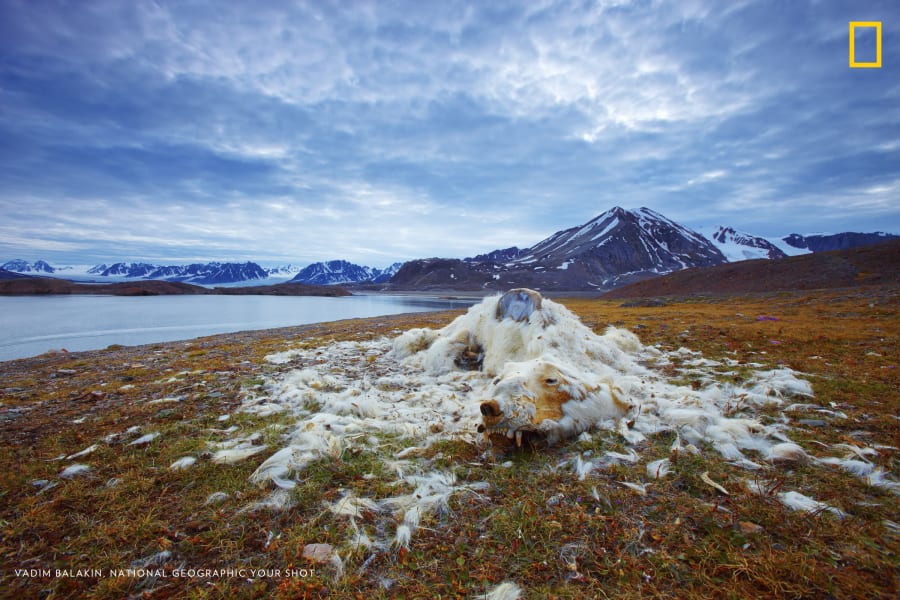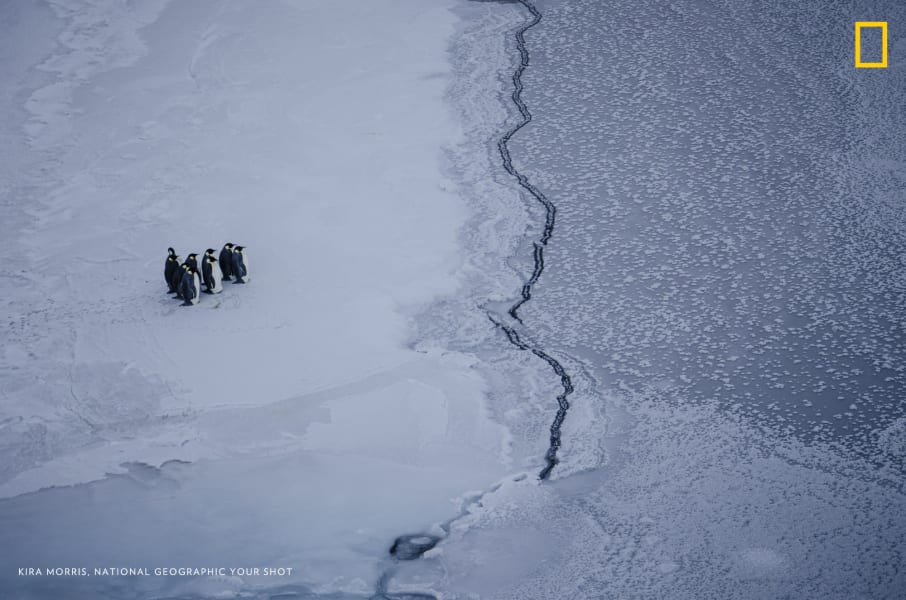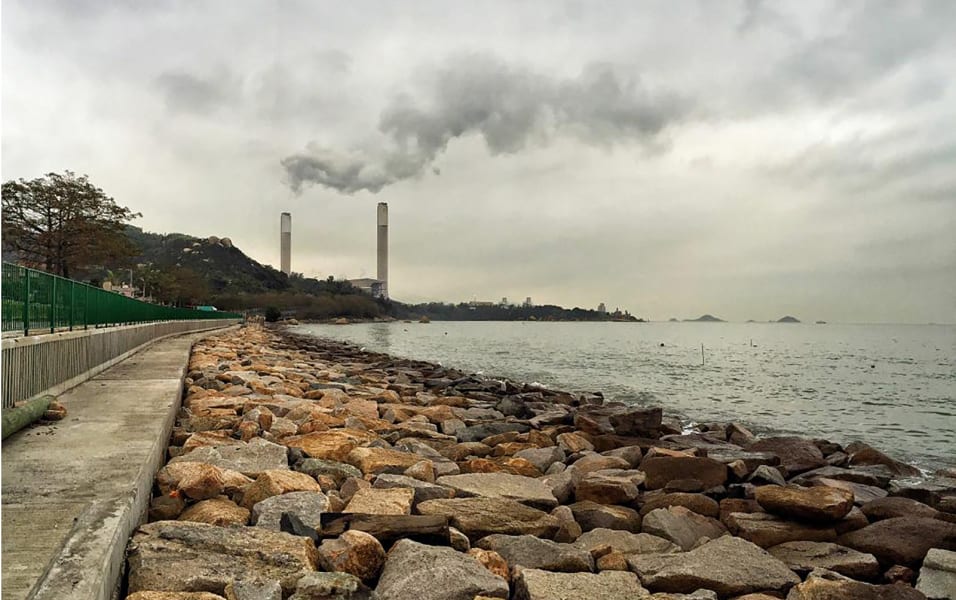Share
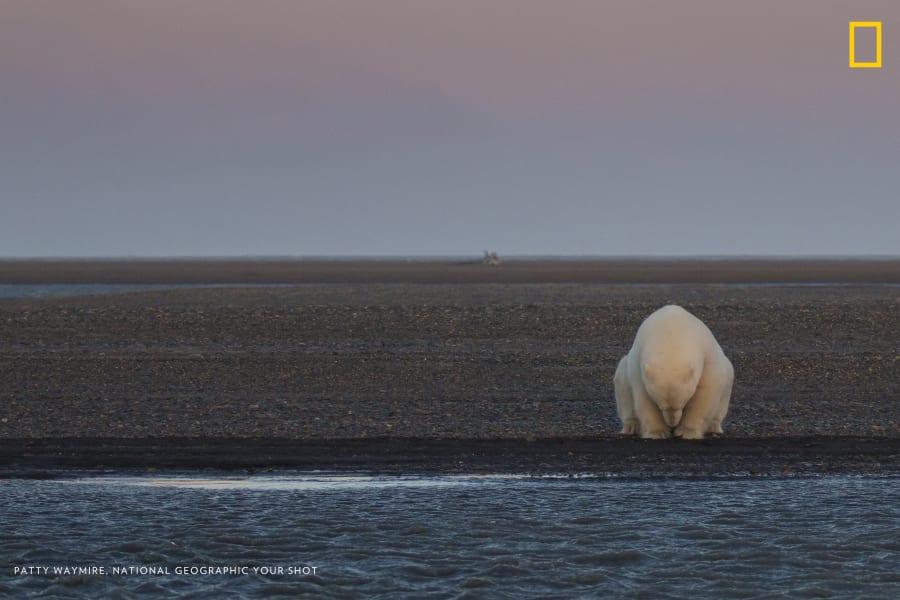

1 of 18
The "Climate Change -- In Focus" exhibition shows the effects of climate change.
Pictured: A solitary bear sits on the edge of one of the Barter Islands, Alaska. There is no snow, when at this time of year, there should be," wrote photographer Patty Waymire. Via National Geographic Your Shot Patty Waymire/National Geographic Your Shot
Pictured: A solitary bear sits on the edge of one of the Barter Islands, Alaska. There is no snow, when at this time of year, there should be," wrote photographer Patty Waymire. Via National Geographic Your Shot Patty Waymire/National Geographic Your Shot
The exhibition shows the best 100 photographs from a global competition.
"On a recent trip to Indonesia we were saddened to see the huge number of bleached anemones. We expected to see some coral bleaching, but we were surprised by how many anemones were also becoming victims to rising ocean temperatures," wrote photographer Diana Paboojian. Via National Geographic Your Shot Diana Paboojian/National Geographic Your Shot
"On a recent trip to Indonesia we were saddened to see the huge number of bleached anemones. We expected to see some coral bleaching, but we were surprised by how many anemones were also becoming victims to rising ocean temperatures," wrote photographer Diana Paboojian. Via National Geographic Your Shot Diana Paboojian/National Geographic Your Shot
Photo: Kira Morris. A group of emperor penguins faces a crack in the sea ice, near McMurdo Station, Antarctica. Via National Geographic Your Shot Kira Morris/National Geographic Your Shot
Photo: Jetje Japhet, South Africa. "These animals have found the secret stash of the orange farmer who dumps the oranges that have fallen from his trees at least 7km away from the orchards to control the breeding of fruit fly. It is the end of a long, dry, winter exacerbated by global warming which makes the winters longer and drier and the summers hotter with less rain in an already dry climate. These animals then behave totally out of character with baboons and warthog still feeding after dark," wrote Japhet. Via National Geographic Your Shot Jetje Japhet/National Geographic Your Shot
A seal lies near among massive cracks in the sea ice near Ross Island, Antarctica. Photo: Kira Morris, Antarctica. Via National Geographic Your Shot Kira Morris/National Geographic Your Shot
Photo: Probal Rashid. "A flood-affected woman on a raft approaches a boat, searching a dry place to shelter herself in Islampur, Jamalpur, Bangladesh. Bangladesh is one of the countries most vulnerable to the effects of climate change," wrote Rashid. Via National Geographic Your Shot Probal Rashid/National Geographic Your Shot
Photo: Vladimir Melnik, Russia: "I was in expedition exploring Franz Josef Land archipelago. There was a polar station where people brought dogs as guards against polar bears. The summer is difficult time for bears. In recent years warming in Arctic resulted in loss of sea ice which is critically important for bears as they can hunt only from ice. The bears which stay on the islands doomed to meager ration and go to human settlements," wrote Melnik. Via National Geographic Your Shot Vladimir Melnik/National Geographic Your Shot
Photo: Ujjal Das, India: "The pic was taken in Puruliya District of West Bengal. This is a drought-prone area and in summertime the whole district becomes dry creating water problem." Via National Geographic Your Shot Ujjal Das/National Geographic Your Shot
Matuf Ikhsan, Indonesia: "In Gers, France, an irrigation reservoir supplies water to a monocultural field. Here the economy revolves mainly around culinary tourism." Mahtuf Ikhsan
Riddhima Singh Bhati, India: "This part of Rajasthan is badly affected by intense heat waves and dryness because of decreased precipitation. The anticipated rise in temperature due to climate change poses formidable challenge to development of livestock in India." Riddhima Singh Bathi
Photo by Hira Ali, Pakistan: "The picture shows a flooding in the mountainous area of Chitral, in the north of Pakistan. There are many glaciers high in the mountain. Due to climate change, for the past two years there has been a lot of flooding and destruction." Hira Ali
Photo: Leung Ka Wa, China: "A visible aspect of climate change is the turbidity in the air. It can be caused by particulates caused by combustion products. The turbid air decreases visibility so it is harder to see the stars in urban areas." Ka Wa Leung
Photo: Tom Schifanella, USA: "Since 2000, Icelandic glaciers have lost 12% of their size, in less than 15 years. Pictured here, Icelandic guide Hanna Pétursdóttir admires an ice cave inside the Svínafellsjökull Glacier, which she notes is rapidly expanding due to the effects of global warming," wrote Schifanella. Via National Geographic Your Shot Tom Schifanella/National Geographic Your Shot
Photo: Stuart Chape, Samoa: "This aerial view of the Chong Kneas floating village on Tonle Sap lake, Cambodia, demonstrates just how threatened the great lake is from changing rainfall patterns and rising temperatures." Via National Geographic Your Shot Stuart Chape/National Geographic Your Shot
Photo: Long Yat Chau, Hong Kong: "Air pollution, particularly in the form of waste gas from generating stations, is a serious problem in Hong Kong." Long Yat Chau
Photo: Ryan Lai, Hong Kong: "Piles of solid waste lie behind a perfectly-framed photograph of spectacular scenery." Ryan Lai
Photo: Felicia Hou, USA: "It is almost as if Mother Nature is sending us a warning that if we do not stop destroying the planet now, there may not be one to destroy in the future." Felicia Hou
Photo: Vadim Balakin, Russia: "These polar bear remains have been discovered at one of the islands of Northern Svalbard, Norway. While it is not certain whether the polar bear died from starvation or old age, the good condition of its teeth indicate that it is most likely from starvation," wrote Balakin. Via National Geographic Your Shot Vadim Balakin/National Geographic Your Shot
